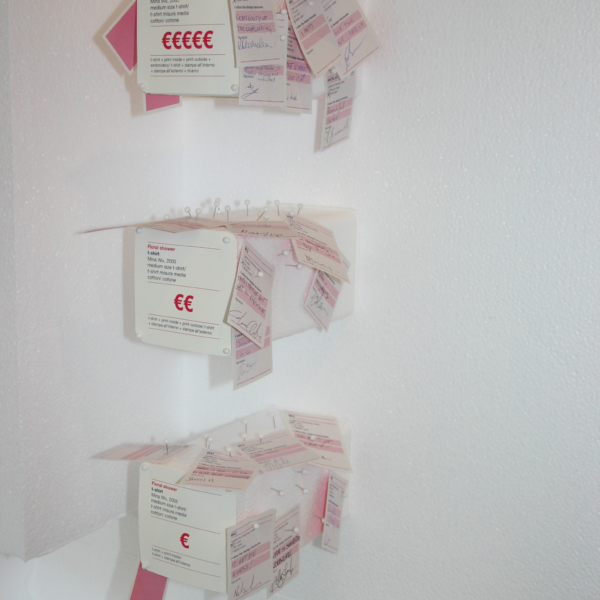Value for Money
Droog’s 13th Milan presentation.
What determines the price of a product? The amount of raw material? The value of the material? Production time? Labour costs? Edition? Uniqueness? The name and reputation of the designer or brand?
In Value for Money the visitor was invited to answer these questions. The participating designers had been asked to link the factors that determined the price to the factors that determined a product’s emotional value, such as function, form, meaning, look, comfort, durability. The price of a product is determined to a large extent by the material and the technique used to manufacture it. But what about the value of the design?
Frank Tjepkema’s lampshade, which was lasered in 10 minutes, functioned differently than the lampshade that took longer to make. More printing made Maurice Scheltens’ tablecloth more appropriate for more people. The stool by Niels van Eijk & Miriam van der Lubbe could be a chair or even an armchair for the same price when cheaper material is used. By adding other threads to the weave, Christien Meindertsma’s duvet cover gained more visual value and extra comfort. By stacking several copies on top of each other, the visual value of Joris Laarman’s soup bowl was increasing. In the case of jewellery, emotional value and the value of the material often seemed to coincide. The value of Ted Noten’s brooches completely depended on the weight of the gold.
The question was whether the consumer feels the same, whether the emotional value of the design was directly proportional to the product’s price-determining value. Visitors to Value for Money were challenged to give their answer to this by attaching a filled out cheque from a specially designed chequebook to their preferred product.
The project was attended by about 6.000 visitors and the most remarkable was the way these visitors thoroughly analysed their personal preferences for particular design. The presentation triggered people to think about what determines the price of a product. Based on the €-signs in hotel or restaurant guides, fictive and relative values were ascribed by Droog to products by using a certain number of €-signs. Using an accompanying publication, the chequebook, visitors actively participated in the presentation and gave their own opinion about the value of the exhibited products, choosing the best design within presented series.
For five days a discussion went on, raising various questions: which ideas and concepts are the most important to a good design? Is the ideological value the same as the financial value ascribed to a design? The outcome was often most surprising, and the products valued most by the visitors often deviated from the products most expensive to produce.
Value for Money was also shown at Droog at Home 14 June to 24 July 2005.

